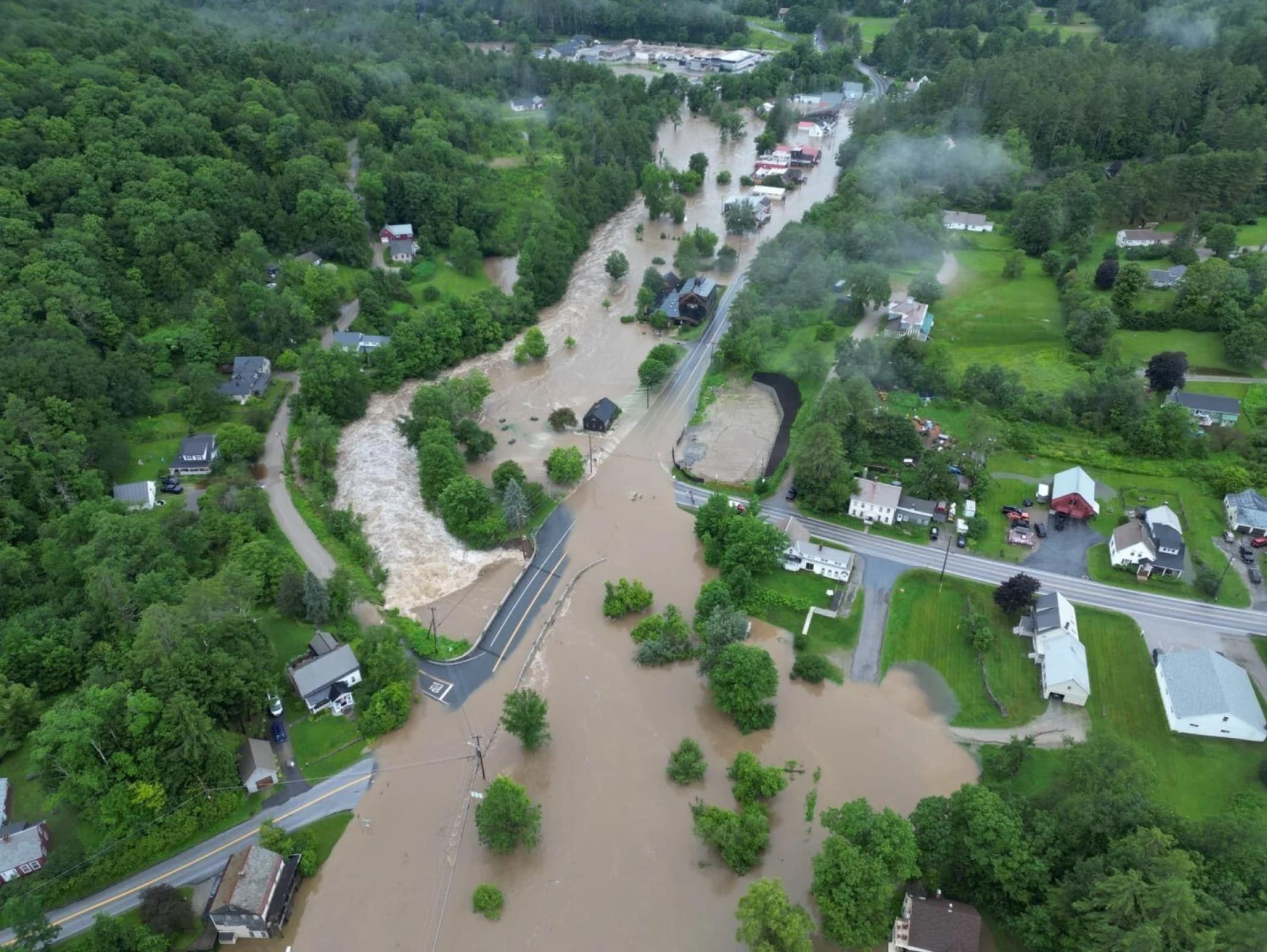Vermont Flooding 2023 | Updates & How to Help
In the aftermath of historic rains and flooding, Vermonters are once again finding strength and hope in one another.

Flooding in Londonderry, Vermont, on the morning of Monday, July 10, 2023.
Photo Credit : Courtesy R. McDonough/Phoenix Vol. Fire Co.Quick Links: How to Help
- The Vermont Community Foundation has organized the VT Flood Response & Recovery Fund 2023 for flood-specific donations.
- You can give financial assistance to the Vermont Main Street Recovery Fund, which will issue grants to small businesses affected by the floods.
- State officials are also encouraging support of the American Red Cross of Northern New England and local United Way chapters.
On the morning of July 15th, a Saturday, longtime Yankee photographer and filmmaker, Corey Hendrickson, texted me an update about the flood situation affecting his hometown of Middlebury, Vermont. He had returned to his family late the night before from Lubec, Maine, where a small crew of us had been shooting a video. There had been an eight-hour drive home, then a few hours rest in his own bed, before a knock on the door from emergency officials.
“Got home just in time,” Hendrickson wrote. “Our road now closed and we got temporarily evacuated last night at 1 a.m.”
It was a precautionary move. Hendrickson and his family were safe, and his house was never damaged–by mid-morning, the family was back home. They were one of the lucky ones. That has not been the case for other Vermonters and other parts of Vermont.
In the days before, and on July 8th and 9th in particular, Vermont was deluged with rain, up to nine inches in some areas, swelling rivers and brooks and causing flooding that for some communities superseded what they’d experienced when Tropical Storm Irene hit in 2011. More than 100 people had to be rescued by boat in stranded and hard-hit areas, while thousands of homes were lost and many roads were washed out or completely destroyed. On Wednesday, July 11th, Governor Phillip Scott had hiked the VAST trail to get to a drivable road to get home and to work that morning.
Elsewhere, the scenes transmitted across social media were hard to even comprehend. A collapsed motel on the banks of the Lamoille River in Hardwick. The business district of Montpelier, the state capital, under several feet of water. A Frito-Lay truck floating down the Winooski River in downtown Barre.
“It seems like you’re in a dream,” Ludlow resident, Jerry Sheehan, told the Boston Globe. Behind him lay the ruins of his home, a crushed trailer on its side, propped up against two trees.
In the wake of the disaster, the state’s true character revealed itself. Vermonters rolling up their sleeves and helping fellow Vermonters. In Waterbury Village, Joseph Pensak, co-owner of the Phoenix Gallery and Music Hall opened up his basement for fellow residents who needed storage space. The Gamebird restaurant in Ludlow offered free meals and groceries. The Village Store in Marshfield held a free barbecue. Meanwhile, through a new state Web site, many other Vermonters had registered as volunteers for the cleanup. In addition, the Facebook group, VT Flooding 2023 Response and Recovery Mutual Aid, had more than 2,500 members within just a few hours of its creation. And on it goes.
For those living out of state, there are a number of ways to help as well. The Vermont Community Foundation has organized the VT Flood Response & Recovery Fund 2023 for flood-specific donations. You can give financial assistance to the Vermont Main Street Recovery Fund, which will issue grants to small businesses affected by the floods. State officials are also encouraging support of the American Red Cross of Northern New England and local United Way chapters.
“One of the defining truths about Vermont is that Vermonters look out for one another,” said Dan Smith, the Community Foundation’s CEO. “We saw it during the pandemic; we saw it during Tropical Storm Irene.”
And we are seeing it again following the floods of 2023.


